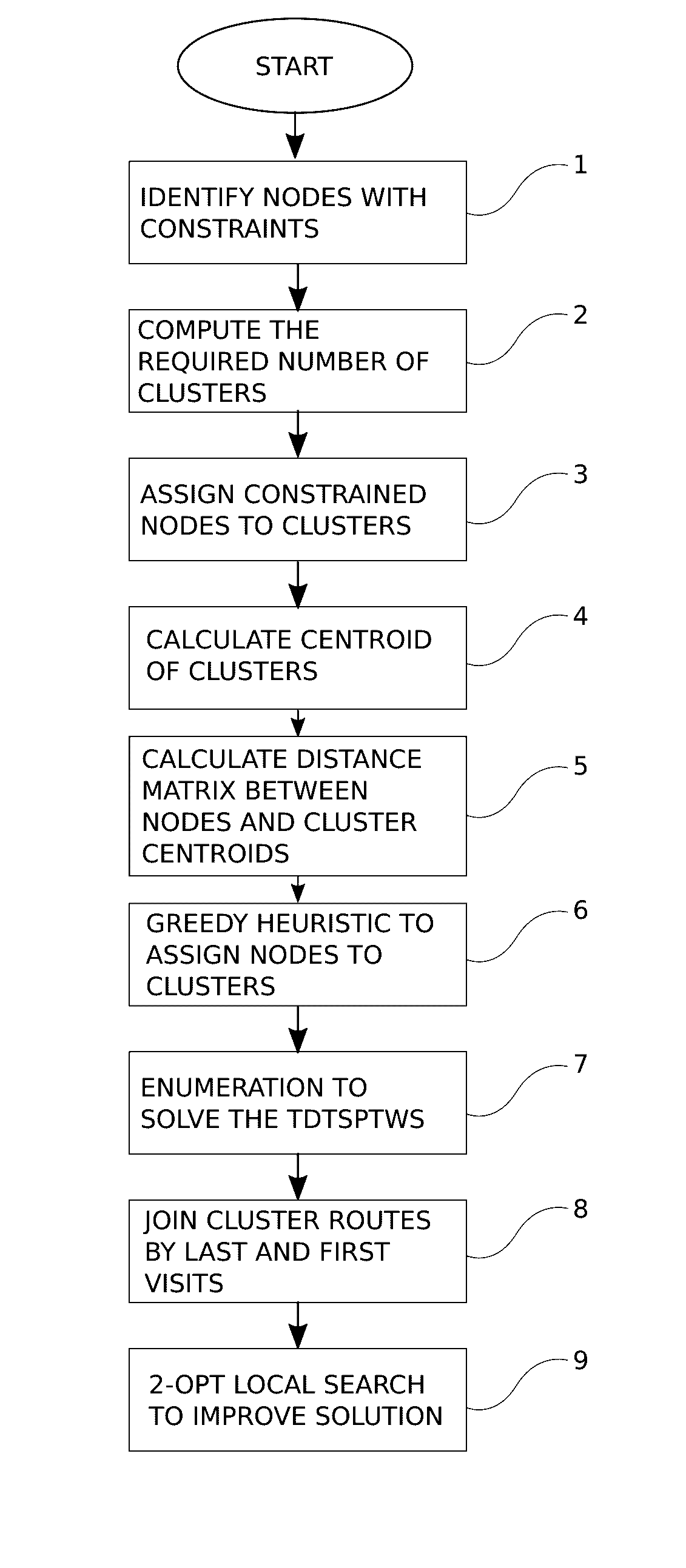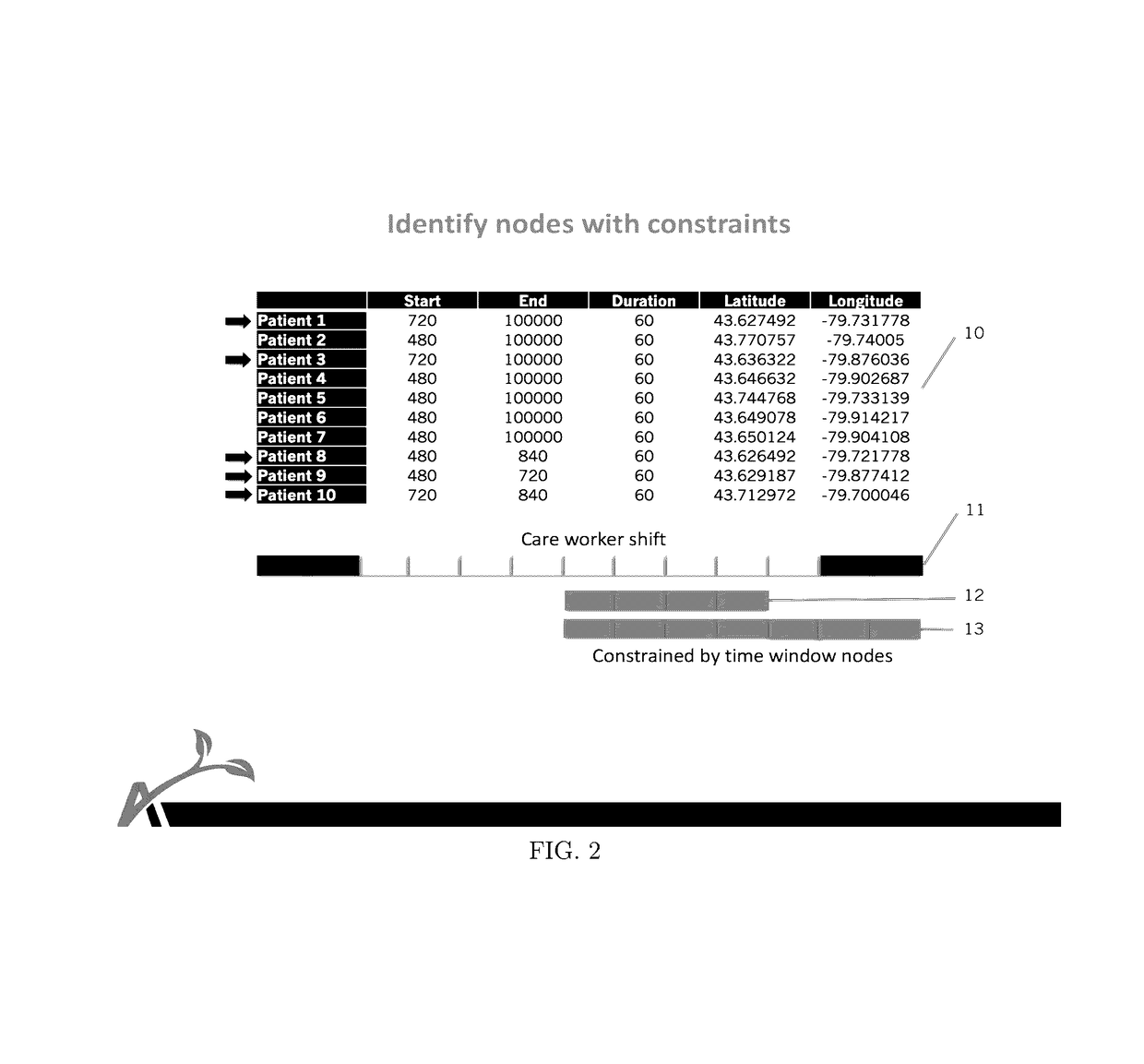Method for Finding the Optimal Schedule and Route in Contrained Home Healthcare Visit Scheduling
a technology for scheduling and home healthcare, applied in the field of operation research in home healthcare, can solve the problems of significant scheduling problems, inability to cut costs, and inability to meet the needs of patients, and achieve the effect of improving the quality of the initial solution
- Summary
- Abstract
- Description
- Claims
- Application Information
AI Technical Summary
Benefits of technology
Problems solved by technology
Method used
Image
Examples
Embodiment Construction
[0025]FIG. 1 shows the method steps of the invention and FIG. 2-FIG. 8 exemplify it.
[0026]Step [1] represents the identification of constrained patient visits amongst constrained and unconstrained ones. It defines a set of patient visits that limit the potential solution space by adding constraints to the optimization problem. Said constraints are described in the form of time windows that limit the period during which a patient can be visited.
[0027][10] shows a table with 10 patient visits and the required information that is needed. “Start” and “End” represent the time window in minutes—in this case 720 means noon. “Duration” means the length of the visit in minutes and “Latitude” and “Longitude” are geographic coordinates. The shift in our example starts at 480 minutes. When “Start” is set to 480, it means that the visit doesn't have a lower bound significant to our problem since it equals the shift start time. When “End” is set to 100000, it means that the visit doesn't have an ...
PUM
 Login to View More
Login to View More Abstract
Description
Claims
Application Information
 Login to View More
Login to View More - R&D
- Intellectual Property
- Life Sciences
- Materials
- Tech Scout
- Unparalleled Data Quality
- Higher Quality Content
- 60% Fewer Hallucinations
Browse by: Latest US Patents, China's latest patents, Technical Efficacy Thesaurus, Application Domain, Technology Topic, Popular Technical Reports.
© 2025 PatSnap. All rights reserved.Legal|Privacy policy|Modern Slavery Act Transparency Statement|Sitemap|About US| Contact US: help@patsnap.com



